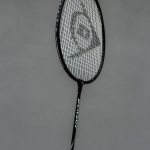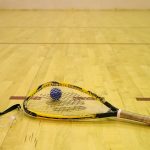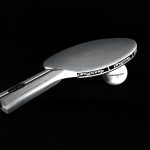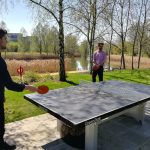Mastering the Art of Badminton: Tips for Success
Description
Badminton is a fast-paced racquet sport that has gained immense popularity worldwide, both as a competitive sport and a recreational activity. Originating from the ancient game of battledore and shuttlecock, badminton has evolved into a highly structured game governed by the Badminton World Federation (BWF). The game is played on a rectangular court divided by a net, with players using lightweight racquets to hit a shuttlecock back and forth.
The objective is to score points by landing the shuttlecock in the opponent’s court while preventing them from doing the same. The basic rules of badminton are relatively straightforward, making it accessible to players of all ages and skill levels. A match can be played in singles (one player per side) or doubles (two players per side) formats.
Each game is played to 21 points, and players must win by at least two points. The scoring system is known as rally scoring, meaning that a point is awarded on every serve, regardless of which player served. Understanding these fundamental aspects of the game is crucial for anyone looking to delve deeper into badminton, as they form the foundation upon which more advanced skills and strategies are built.
Key Takeaways
- Badminton is a racket sport played with a shuttlecock and can be played in singles or doubles.
- Essential skills and techniques in badminton include grip, stance, and swing, as well as mastering different types of shots such as clears, smashes, and drops.
- Improving footwork and agility is crucial in badminton to be able to move quickly and efficiently around the court.
- Mastering different types of shots, such as the clear, smash, and drop, is essential for success in badminton.
- Enhancing strategy and game awareness involves understanding the opponent’s weaknesses and strengths, as well as being able to anticipate their next move.
Developing Essential Skills and Techniques
To excel in badminton, players must develop a range of essential skills and techniques that contribute to their overall performance. One of the most critical skills is the ability to serve effectively. A well-executed serve can set the tone for the rally, allowing the server to dictate play from the outset.
There are various types of serves, including high serves, low serves, and flick serves, each serving a different tactical purpose.
In addition to serving, mastering the grip is fundamental for effective shot-making.
The forehand and backhand grips are the two primary grips used in badminton.
Players should practice transitioning between these grips seamlessly during rallies to maintain fluidity in their gameplay.
Furthermore, developing hand-eye coordination is vital for timing shots accurately and making contact with the shuttlecock at the optimal point.
Improving Footwork and Agility
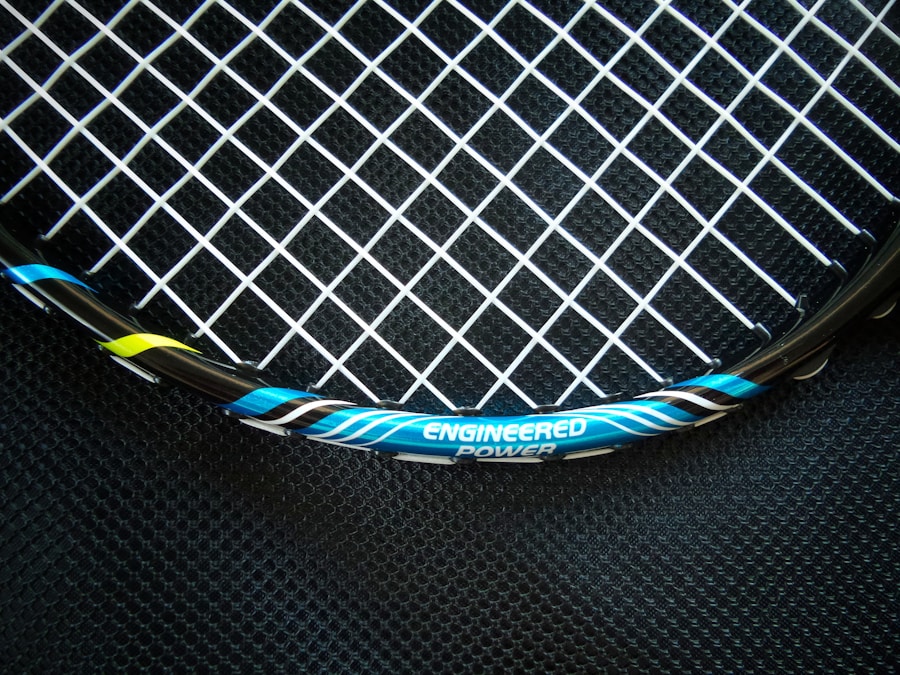
Footwork is often regarded as one of the most critical components of badminton success. The ability to move quickly and efficiently around the court can significantly impact a player’s performance. Good footwork allows players to position themselves optimally for each shot, ensuring they can return the shuttlecock effectively while maintaining balance and control.
Players should focus on developing a strong base through proper stance and movement techniques, such as lunging, sidestepping, and quick pivots. Agility drills can enhance footwork by improving speed and reaction time. Exercises such as ladder drills, cone sprints, and shadow badminton can help players develop quick lateral movements and explosive acceleration.
Additionally, practicing specific footwork patterns that mimic game situations can prepare players for real match scenarios. For example, players can set up cones in a pattern that reflects common shot placements on the court and practice moving between them quickly while maintaining proper form. This not only builds physical fitness but also ingrains muscle memory for efficient movement during actual gameplay.
Mastering Different Types of Shots
| Shot Type | Accuracy (%) | Success Rate (%) |
|---|---|---|
| Jump Shot | 45 | 60 |
| Layup | 70 | 80 |
| Hook Shot | 55 | 70 |
| Three-Point Shot | 40 | 50 |
A well-rounded badminton player must be proficient in various types of shots to keep opponents guessing and maintain control of the game. The fundamental shots include clears, drops, smashes, and drives, each serving distinct purposes during a match. The clear shot is typically used to send the shuttlecock high and deep into the opponent’s court, allowing players time to reposition themselves.
Conversely, drop shots are executed with finesse to land just over the net, forcing opponents to rush forward. The smash is one of the most powerful offensive shots in badminton, characterized by its steep angle and speed. To execute an effective smash, players must generate significant racket head speed while timing their jump correctly to hit the shuttlecock at its highest point.
This requires not only strength but also precise timing and positioning. Drives are flat shots that travel quickly across the net, often used in fast-paced exchanges to maintain pressure on opponents. Mastering these shots involves consistent practice and an understanding of when to deploy each type based on the match situation.
Enhancing Strategy and Game Awareness
Beyond technical skills, developing strategic thinking and game awareness is essential for success in badminton. Players must learn to read their opponents’ movements and anticipate their next shots. This involves observing patterns in their play style—such as preferred shot types or weaknesses—and adapting one’s strategy accordingly.
For instance, if an opponent consistently struggles with backhand returns, a player might focus on targeting that area during rallies. Additionally, understanding court positioning is crucial for effective gameplay. Players should be aware of their own positioning relative to their opponent’s location on the court.
Maintaining a central position allows for quicker responses to shots played in any direction. Moreover, players should develop an awareness of their own strengths and weaknesses; this self-assessment enables them to play to their advantages while minimizing exposure to vulnerabilities. Engaging in match simulations or practice games can help players refine their strategic thinking under pressure.
Maintaining Physical and Mental Fitness

Cardiovascular Training for Endurance
Regular cardiovascular exercises, such as running or cycling, can enhance overall stamina, allowing players to maintain high levels of play throughout matches.
Building Strength and Mental Fitness
Focusing on core muscles, legs, and upper body strength training can improve shot power and stability. Mental fitness is equally important, as maintaining focus and composure during matches can significantly influence outcomes. Techniques like visualization can help players mentally prepare for matches by imagining successful plays and strategies.
Developing Resilience and a Deeper Appreciation
Additionally, mindfulness practices can aid in managing stress and anxiety during competitive situations. Players should develop resilience by reflecting on their performances and identifying areas for improvement without dwelling on mistakes. By understanding its fundamentals, honing essential skills, improving footwork, mastering various shots, enhancing strategic awareness, and maintaining overall fitness, players can elevate their game significantly. Whether playing competitively or recreationally, these elements contribute to a deeper appreciation of badminton as both an art form and a sport that challenges both body and mind.
If you’re a fan of Badminton, you may also be interested in learning about the latest version of Microsoft Word APK. This article discusses the features and updates of Microsoft Word APK v16.0.16924.20064, which can be a useful tool for creating documents and reports related to Badminton tournaments or events. Check out the article here for more information.
FAQs
What is badminton?
Badminton is a racquet sport played by either two opposing players (singles) or two opposing pairs (doubles), who take positions on opposite halves of a rectangular court divided by a net.
What equipment is used in badminton?
The primary equipment used in badminton includes a shuttlecock (also known as a birdie), badminton racquets, and a net. Players also typically wear appropriate athletic clothing and non-marking shoes.
What are the basic rules of badminton?
The basic rules of badminton include serving diagonally, scoring points by landing the shuttlecock within the opponent’s court, and winning a match by winning two out of three games.
What are the health benefits of playing badminton?
Playing badminton can provide numerous health benefits, including improved cardiovascular fitness, agility, coordination, and flexibility. It also helps in burning calories and can be a great way to stay active and fit.
What are the different types of badminton shots?
Some of the different types of badminton shots include the clear, drop shot, smash, drive, and the net shot. Each shot has its own specific technique and purpose in the game.
What are the different types of badminton tournaments?
There are various types of badminton tournaments, including local, national, and international competitions. The most prestigious international tournaments include the All England Open, BWF World Championships, and the Olympic Games.

